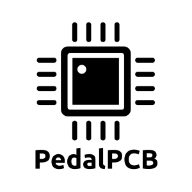BuddytheReow
Breadboard Baker
Update: See post #2 with cleaned up gut shot and other circuit inside.
Here's another BtR original. These are 2 one knob fuzzes that I made switchable in a single enclosure: a NUT FUZZ (my design) and Phantom Octave Fuzz. Both are stripboard builds. Both of these builds use a LED: one a red and one blue. I snagged a few multi-color diodes that I wanted to use as well. When bypass is engaged the diode is green, when in the NUT FUZZ mode its red, and Phantom Octave it's blue.
Edit: Besides the multicolored LED, I also wanted to have the "magic eye" effect of having a LED light up when signal passed through. Flip the switch to the "red" channel, the indicator LED glows red and the other LED lights up when I play. Flip it to the "blue" channel, and the indicator goes blue and the other LED lights up when I play. IDK. I thought it sounded like a cool idea at the time.
These are heavy, low end fuzzes and work pretty well on bass besides a low tuned guitar. I had a lot of fun on my lunch break just messing around with some heavy fuzz riffs. If I had a camera I would record a demo, but it sounds great to me. I like the Nut Fuzz one better, but both are in a similar ballpark in terms of sound; one is more octave-y than the other.
Since these are stripboard there's a rat's nest, but I tried as best I can to keep it to a minimum. Oh well, I still had a blast putting this together.
Yea, I know I messed up on one of the diode holes being offcenter.
 forum.pedalpcb.com
forum.pedalpcb.com
Here's the pedal in bypass. This is the only pedal I've made that has a LED on when disengaged. I'm used to it now.

Here's the "red" channel with signal going through it.

Likewise with the "blue" channel.

aaaaaaand....the rat's nest gutshot. Yeeeesh....

Here's another BtR original. These are 2 one knob fuzzes that I made switchable in a single enclosure: a NUT FUZZ (my design) and Phantom Octave Fuzz. Both are stripboard builds. Both of these builds use a LED: one a red and one blue. I snagged a few multi-color diodes that I wanted to use as well. When bypass is engaged the diode is green, when in the NUT FUZZ mode its red, and Phantom Octave it's blue.
Edit: Besides the multicolored LED, I also wanted to have the "magic eye" effect of having a LED light up when signal passed through. Flip the switch to the "red" channel, the indicator LED glows red and the other LED lights up when I play. Flip it to the "blue" channel, and the indicator goes blue and the other LED lights up when I play. IDK. I thought it sounded like a cool idea at the time.
These are heavy, low end fuzzes and work pretty well on bass besides a low tuned guitar. I had a lot of fun on my lunch break just messing around with some heavy fuzz riffs. If I had a camera I would record a demo, but it sounds great to me. I like the Nut Fuzz one better, but both are in a similar ballpark in terms of sound; one is more octave-y than the other.
Since these are stripboard there's a rat's nest, but I tried as best I can to keep it to a minimum. Oh well, I still had a blast putting this together.
Yea, I know I messed up on one of the diode holes being offcenter.
Buddy's Breadboard and Circuit Design Notes
I recently threw together a stripboard layout I found online. This is a muff derivative called the "Ultra Stoner Mk II" by Grind Custom Fx. What called me to build this one is the DOOM switch and SHAPE control. I was thoroughly amazed at the heavy, mid-humped sounds that can come out of this...
Here's the pedal in bypass. This is the only pedal I've made that has a LED on when disengaged. I'm used to it now.

Here's the "red" channel with signal going through it.

Likewise with the "blue" channel.

aaaaaaand....the rat's nest gutshot. Yeeeesh....

Last edited:


